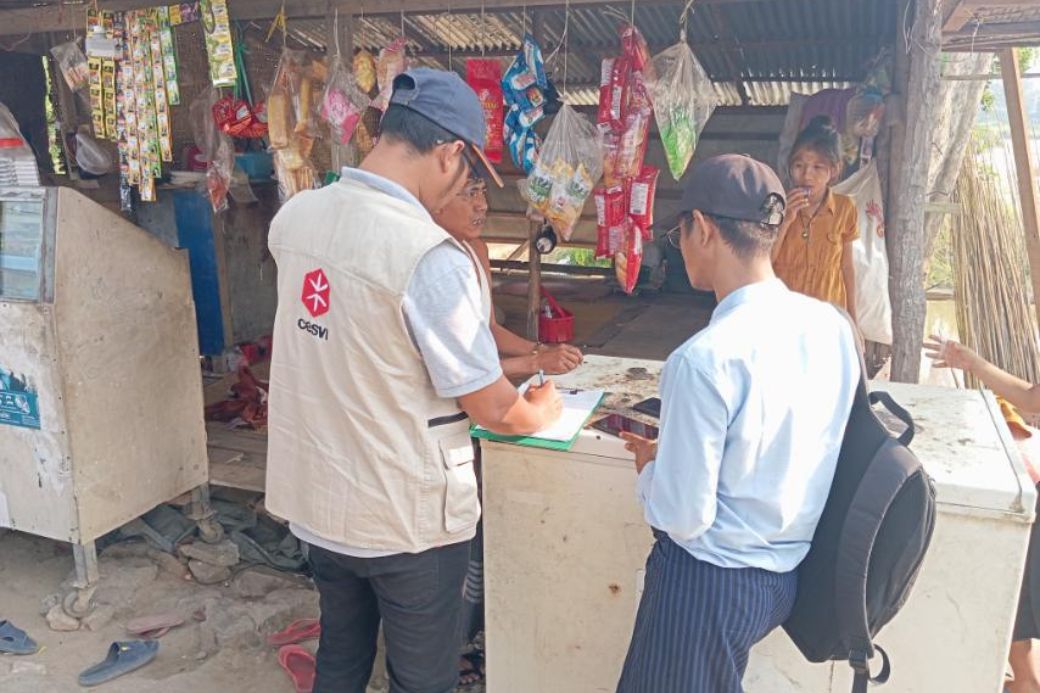The situation in Myanmar is dire, in the wake of the devastating earthquake that struck the country last Friday. A 7.7-magnitude quake, followed by a second 6.4-magnitude quake and numerous aftershocks have left a trail of destruction, with the death toll steadily rising: more than 2,000 dead, 3,900 injured and hundreds missing, but U.S. Geological Service estimates that the death toll could be more than 10,000.
The earth continues to shake, and with it, the hope of thousands. The cities of Mandalay and Southern Shan State are now landscapes of rubble, where houses have become piles of debris and roads torn by deep cracks. People are living on the streets, homeless and in fear of new collapses. Relief efforts are proceeding slowly because of damage to infrastructure and isolated localities.
Give now to support CESVI’s intervention in Myanmar.
The CESVI team is already on the ground in the very regions of Mandalay and Southern Shan State, both areas already targeted by our projects.
“There are several areas of the country that are devastatingly affected. Electricity supplies are very limited and communications are often disrupted. But we are trying to carry out as effective a humanitarian response as possible. We have 3 teams on the ground describing a situation of widespread destruction. Our teams are on the one hand organizing the first actions, and on the other collecting data and analyzing needs and requirements of the population,” says CESVI mission chief Paolo Felice. “The entry of humanitarian goods into the country is very complex, but we at CESVI have been present in Myanmar for many years, and thanks to our knowledge of the territory and suppliers we are able to get aid in more quickly. But there are still many difficulties,” Felice concludes.
“Our organization specializes in supporting children and girls because we work in these areas to provide schooling where it was interrupted because of the conflict. Our first goal is to start emergency education interventions as soon as possible so that children and girls do not miss school, which would have serious long-term consequences,” – says General Manager Stefano Piziali – ‘Secondly, water and food are the needs we are trying to address by finding them for now in the areas close to those most affected by the earthquake,’ he concluded.
The epicenter of the earthquake, in the heart of the Dry Zone near Mandalay, hit a region already proven by floods caused by Typhoon Yagi last year, and with a population of 1.5 million people. Early estimates put the number of people directly exposed to the earthquake at more than 7.3 million (WHO).
Infrastructure has been severely damaged: roads, bridges, hospitals and even airports. A state of emergency has been declared in several regions, already plagued by internal conflict and displacement, where the health care system is collapsing.
The health emergency is critical: the lack of potable water increases the risk of epidemics, while the need for urgent medical care is very high.
The earthquake has hit a country already on its knees, with 19.9 million people in need of humanitarian aid and 3.5 million displaced (OCHA). The situation of children is particularly alarming, with 6.5 million in need.
An extreme heat wave, with temperatures over 40°C, makes the situation even more untenable. The arrival of the monsoons, expected in May, adds further urgency to the need to provide housing solutions.
We at CESVI, who have been present in the country for more than 20 years, have been engaged from the earliest moments to provide immediate aid and contribute to a long-term response, bringing clean water, food and temporary shelter and supporting affected children. Any help is vital to support these communities that have lost everything. Give now.
